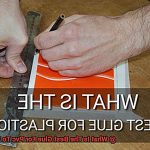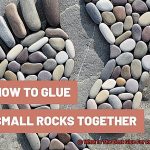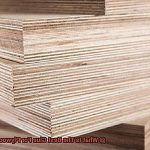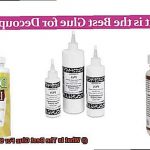Looking for the perfect glue to stick PVC to wood?
Well, you’ve come to the right place. Whether you’re a DIY enthusiast or a pro carpenter, finding the best adhesive for this kind of bonding can be a real head-scratcher.
In this blog post, we’ll unravel the mystery and guide you through the world of glues that work like magic when it comes to joining PVC and wood.
So grab your tools, get ready for some sticky business, and let’s dive in.
What is PVC?
Contents
- 1 What is PVC?
- 2 Types of Glue for PVC to Wood Bonding
- 2.1 Epoxy Adhesive: Strong and Versatile
- 2.2 Disadvantages: Epoxy requires careful mixing and application, which can be messy and time-consuming. It may also have a longer curing time, requiring patience before moving on to the next steps of the project.
- 2.3 Polyurethane Adhesive: Flexible and Waterproof
- 2.4 Super Glue (Cyanoacrylate Adhesive): Quick Fixes
- 2.5 Specialized PVC Glues: Tailored for PVC Bonding
- 2.6 Surface Preparation: The Key to Success
- 3 Solvent-Based PVC Cement
- 4 Epoxy Resin Adhesive
- 5 Construction Adhesives
- 6 Preparing the Surfaces for Bonding
- 7 Testing the Adhesive
- 8 Intended Use and Conditions of the Bonded Joints
- 9 Conclusion
Polyvinyl chloride, better known as PVC, is a synthetic plastic polymer that has taken the industrial world by storm. Its durability, affordability, and versatility have made it an indispensable material across various sectors. In this article, we delve into the characteristics of PVC, its wide-ranging applications, and the environmental considerations surrounding its use.
Characteristics of PVC:
- Impervious to Moisture and Chemicals: PVC’s resistance to moisture and chemicals makes it ideal for both indoor and outdoor applications, ensuring longevity and robustness.
- Rigid or Flexible: PVC can be produced in rigid or flexible forms, offering a broad spectrum of applications. From sturdy pipes to flexible cables, PVC adapts to every need.
- Fire Safety Champion: With exceptional flame resistance properties, PVC guarantees safety in environments where fire hazards are a concern.
Applications of PVC:
- Construction Marvels: The corrosion-resistant and cost-effective nature of PVC pipes makes them indispensable in water supply systems, revolutionizing the construction industry.
- Plumbing Powerhouse: Durable PVC fittings and valves are the go-to choice for plumbing systems due to their ease of installation and longevity.
- Electrical Excellence: The insulation properties and flexibility of PVC make it an ideal material for electrical cables and wiring, ensuring efficient power transmission.
- Automotive Innovation: From dashboards to seat covers, PVC’s durability and resistance to wear and tear make it a preferred material for automotive interiors.
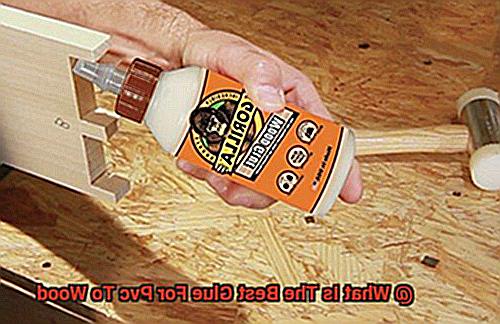
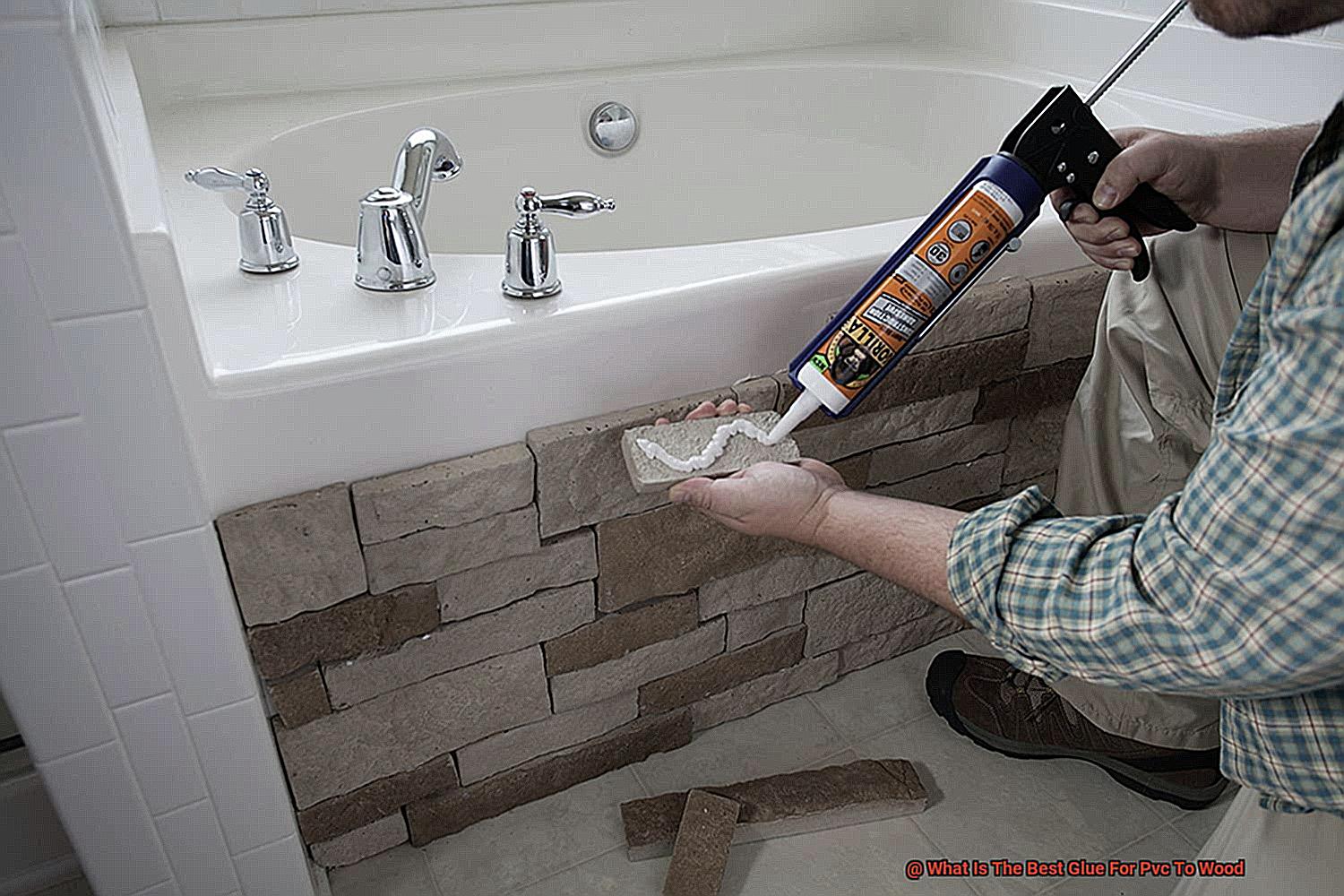
Environmental Considerations:
- Production Process: The manufacturing process of PVC involves chlorine gas, which demands careful handling due to its toxic nature. This necessitates stringent safety protocols.
- Responsible Disposal: Improper disposal or incineration of PVC releases harmful chemicals into the environment, posing risks to both human health and ecosystems.
- Sustainable Solutions: Promising advancements in recycling technologies aim to improve the sustainability of PVC production and minimize its environmental impact.
Types of Glue for PVC to Wood Bonding
Choosing the right glue for bonding PVC to wood is essential for creating strong and durable connections. In this article, we will explore five types of glue commonly used for this purpose, discussing their advantages and disadvantages. By understanding the unique characteristics of each glue, you can make an informed decision for your PVC to wood bonding projects.
Epoxy Adhesive: Strong and Versatile
- Advantages: Epoxy adhesive is known for its high strength and excellent adhesion properties. It creates a durable bond that can withstand various conditions, making it suitable for both indoor and outdoor projects. Epoxy also offers good resistance to chemicals.
-
Disadvantages: Epoxy requires careful mixing and application, which can be messy and time-consuming. It may also have a longer curing time, requiring patience before moving on to the next steps of the project.
Polyurethane Adhesive: Flexible and Waterproof
- Advantages: Polyurethane adhesive is praised for its flexibility and waterproof properties. It forms a strong bond that can endure moisture and temperature changes, making it ideal for outdoor applications. The gap-filling abilities of polyurethane adhesive allow for bonding uneven surfaces, ensuring a secure connection.
- Disadvantages: Polyurethane adhesive may have a longer curing time compared to other glues. It can also be more expensive than other options.
Super Glue (Cyanoacrylate Adhesive): Quick Fixes
- Advantages: Super glue, or cyanoacrylate adhesive, provides instant bonding and has good resistance to moisture and temperature changes. It is perfect for small-scale projects or quick fixes that require immediate results.
- Disadvantages: Super glue may not offer the same level of strength as epoxy or polyurethane adhesive. It may not work well on porous surfaces and can be difficult to remove if mistakes are made during application.
Specialized PVC Glues: Tailored for PVC Bonding
- Advantages: Specifically formulated for PVC materials, PVC cement glues offer a strong and permanent bond between PVC and wood surfaces. Solvent-based versions provide a fast and secure bond. Water-based PVC glues are less toxic and easier to work with.
- Disadvantages: Solvent-based PVC glues emit strong fumes that require proper ventilation during application. Water-based PVC glues may take longer to dry, requiring patience before moving on to the next steps of the project.
Surface Preparation: The Key to Success
- Advantages: Proper surface preparation is essential for achieving a strong bond between PVC and wood. Cleaning the surfaces thoroughly and lightly sanding the wood can improve adhesion, ensuring a secure connection.
- Disadvantages: Surface preparation can be time-consuming, adding an extra step to the bonding process. However, neglecting this step can result in weaker bonds or adhesive failure.
Solvent-Based PVC Cement
Solvent-based PVC cement is a powerful adhesive that is specifically formulated for bonding PVC pipes and fittings, as well as PVC to wood applications. This glue contains a potent combination of solvents and resins that work harmoniously to create an unyielding bond between the two materials.
One of the key advantages of solvent-based PVC cement is its lightning-fast drying time. Unlike other glues that can take hours or even days to set, this cement typically solidifies within minutes. This means you can assemble and install your project in no time at all, saving you precious hours and reducing any unnecessary waiting around.
However, it’s important to be aware of a couple of potential downsides when using solvent-based PVC cement. Firstly, the fumes emitted during application can be quite potent. To ensure your safety, it is crucial to work in a well-ventilated area or wear appropriate respiratory protection. After all, there’s nothing worse than being overwhelmed by noxious odors while trying to create something amazing.
Secondly, not all types of wood are compatible with this glue. Some woods may react negatively to the solvents in the cement, resulting in unsightly discoloration or even damage. To avoid any unfortunate surprises, it’s always best to conduct a small compatibility test before committing to gluing the entire surface.
Epoxy Resin Adhesive
When it comes to creating a strong and durable bond between PVC and wood, only one adhesive can handle the job: epoxy resin adhesive. Like a superhero, this two-part adhesive possesses the power to withstand the test of time and create bonds that are virtually unbreakable. In this article, we will dive into the advantages and steps for using epoxy resin adhesive to bond PVC to wood, transforming your projects from ordinary to extraordinary.
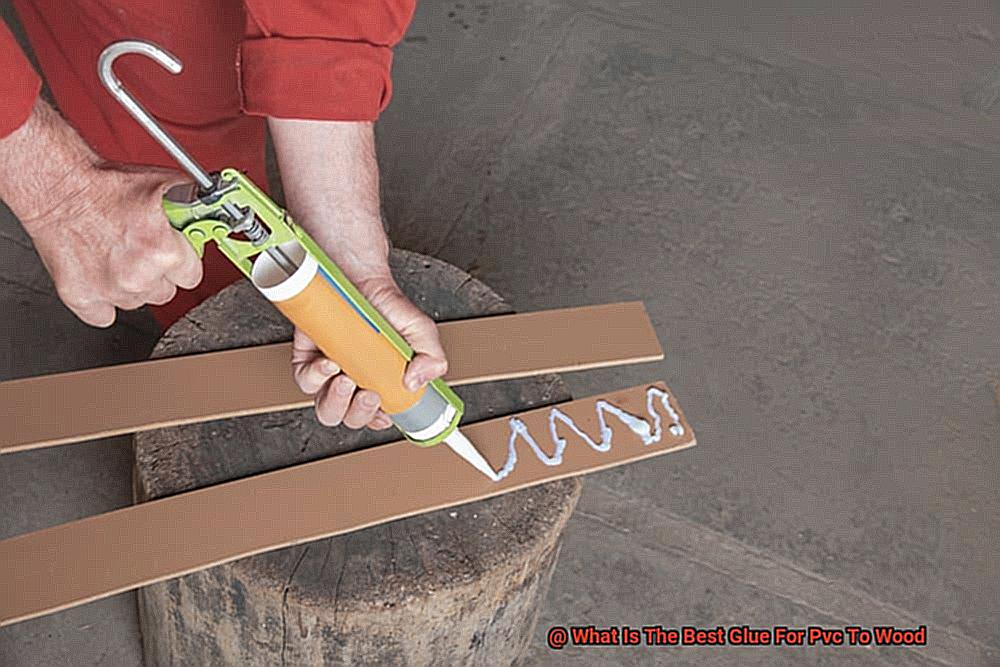
Advantages of Epoxy Resin Adhesive:
- Versatility: With its remarkable ability to adhere to a wide range of materials, including PVC and wood, epoxy resin adhesive is the ultimate choice for bonding these two surfaces together. Its reliability is unmatched.
- Durability: Once cured, epoxy resin forms an unyielding bond that is impervious to moisture, heat, and chemicals. This means it is suitable for both indoor and outdoor applications, allowing you to tackle any project with confidence.
- Strength: When it comes to strength, epoxy resin adhesive reigns supreme. It boasts excellent tensile and shear strength, making it perfect for applications that require a high-strength bond. No matter the impact or vibration, this adhesive will hold strong without compromising the integrity of the bond.
Steps for Using Epoxy Resin Adhesive:
- Surface Preparation: Achieving a flawless bond starts with proper surface preparation. Ensure that both the PVC and wood surfaces are meticulously clean, free from any dirt, dust, or grease. Enhance adhesion by lightly sanding the surfaces, creating a rougher texture that allows the adhesive to grip tightly.
- Mixing: The key to success lies in precise mixing. Follow the manufacturer’s instructions carefully, combining equal parts of the epoxy resin and hardener. Remember, achieving optimal results hinges on getting the mixing ratios just right.
- Application: With the epoxy resin adhesive mixed to perfection, apply it to one of the surfaces using a brush or spatula. Be generous in your application, but avoid excessive amounts that may squeeze out during the bonding process. We want a bond that is strong, not messy.
- Bonding: The moment of truth has arrived. Press the PVC and wood together firmly after applying the adhesive, ensuring that they are aligned perfectly. To keep everything in place while the adhesive cures, utilize clamps or weights. Allow ample time for curing, which can range from a few hours to overnight, depending on the specific product.

Construction Adhesives
Construction adhesives are essential tools in the world of construction, providing a strong and durable bond between various materials. Specifically, when it comes to bonding PVC to wood, choosing the right adhesive is crucial for a successful project.
The first factor to consider is the type of adhesive. There are different types available, each with its own unique properties. For PVC to wood bonding, polyurethane-based adhesives are highly recommended. They offer high strength and flexibility, ensuring that the bond can withstand any movement or expansion/contraction.
Surface preparation is another crucial step in achieving a strong bond. Before applying the adhesive, it is important to ensure that both the PVC and wood surfaces are clean and free from any dust, grease, or contaminants that could hinder adhesion. Giving the surfaces a gentle roughening with sandpaper or an abrasive material can also improve adhesion.
When it comes to application, an even and thin layer of adhesive should be applied on both surfaces. Depending on the consistency of the adhesive, a caulk gun or a brush can be used for application. The key here is to ensure an even distribution for a strong bond.
Some construction adhesives require curing time to reach their full strength. It is important to follow the manufacturer’s instructions regarding the recommended curing time. Patience during this process will ensure a durable and long-lasting bond.
Lastly, seeking professional advice is always a good idea. Consulting with experts in the field can provide valuable insights and recommendations based on their knowledge and experience.
Preparing the Surfaces for Bonding
Achieving a strong and durable bond between PVC and wood requires proper preparation of the surfaces. Just like a beautifully choreographed dance routine, the success of your gluing project hinges on the meticulous steps taken before applying any glue.
To begin, it is crucial to ensure that both the PVC and wood surfaces are squeaky clean. Dirt, dust, or grease can hinder the adhesive’s ability to form a robust bond. So grab a mild detergent or a solution of water and vinegar, and vigorously scrub those surfaces. Rinse them thoroughly and allow them to dry completely before proceeding.
Once the surfaces are clean, it’s time to roughen them up. PVC and wood are inherently smooth materials, posing a challenge for glue adhesion. Enter sandpaper. Gently sand both the PVC and wood surfaces to create a slightly rough texture. This provides more surface area for the glue to grip onto, resulting in a stronger bond.
But wait, there’s more. Elevate your surface preparation game by using a primer or an adhesion promoter. These specialized products enhance adhesion on difficult-to-bond surfaces like PVC. Apply a thin layer to both the PVC and wood surfaces, following the manufacturer’s drying instructions. This additional step significantly increases bond strength.
With your surfaces cleaned, roughened, and primed, ensure they fit together seamlessly like a perfect puzzle. Before applying glue, double-check that the PVC and wood pieces are properly aligned and fit snugly. Employ clamps or other tools if necessary to secure everything in place. A tight fit prevents gaps or unevenness that could weaken the bond.
Remember to consider temperature and humidity conditions as well. Extreme temperatures or high humidity can impede adhesive performance and overall bond strength. Choose a well-ventilated area with moderate temperature and humidity levels for optimal results. Don’t let environmental factors disrupt your gluing groove.
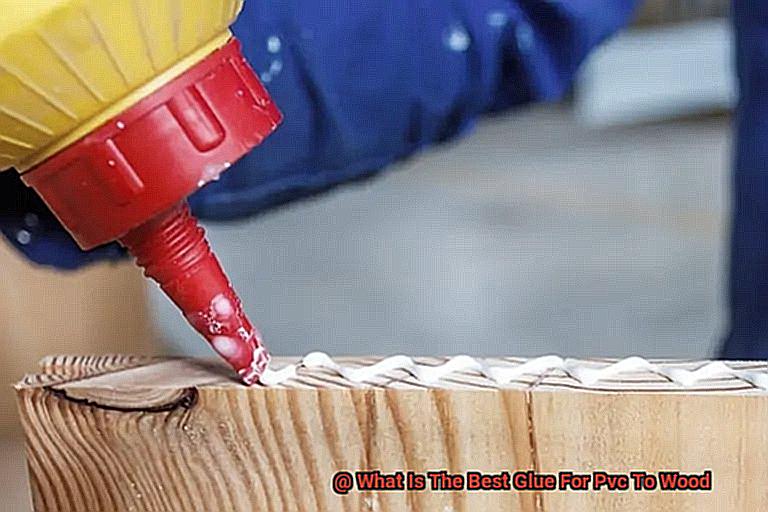
Testing the Adhesive
When it comes to bonding PVC to wood, finding the perfect adhesive can be a daunting task. But fear not, because I’m here to guide you through the intricate world of adhesive testing. Brace yourself for a comprehensive exploration of the various tests that should be conducted to determine the best adhesive for this specific application.
First and foremost, let’s talk about bond strength. You want an adhesive that can hold PVC and wood together with an unwavering grip, like two soulmates intertwined in eternal unity. One common test to determine bond strength is the shear test. This involves applying a force parallel to the bonded surfaces, almost as if the adhesive is being challenged to a battle of strength. Only the toughest adhesives withstand this pressure and emerge victorious.
Now, let’s move on to durability. A true adhesive warrior must be able to stand the test of time, defying the forces of wear and tear that threaten its bond. To assess durability, it’s essential to conduct long-term tests that push the boundaries of endurance. Subjecting the bonded PVC and wood to various conditions over an extended period will reveal if the adhesive possesses the resilience needed for a lasting connection.
But wait, there’s more. Temperature resistance is another key consideration in this epic journey of adhesive discovery. PVC and wood are like cosmic dancers, expanding and contracting with temperature changes. Only an adhesive with supernatural powers can withstand these cosmic gyrations without losing its grip. Testing the adhesive under different temperature conditions will unveil its true ability to weather the storm.
And let us not forget about water resistance, my dear adventurer. In a world where moisture lurks at every corner and outdoor conditions can be unforgiving, an adhesive must possess an unwavering resistance to water. A thorough evaluation of the adhesive’s ability to repel water will provide valuable insights into its performance in wet or humid environments.
Lastly, do not underestimate the power of collective wisdom. Seek guidance from those who have embarked on this adhesive quest before you. User reviews and recommendations can act as the compass that guides you towards the adhesive that has already proven its worth in the battlefield of PVC to wood bonding.
Intended Use and Conditions of the Bonded Joints
When it comes to bonding PVC to wood, it is crucial to consider the intended use and the conditions the bonded joints will be subjected to. Different types of glue have varying strengths and resistance to environmental factors, so choosing the right adhesive depends on the specific application.
One important factor to consider is whether the bonded joint will be exposed to moisture or water. If the PVC to wood bond will be in a wet or high humidity environment, it is essential to choose a glue that is water-resistant or waterproof. This will ensure that the bond remains strong and durable over time, even when faced with a little H2O.
Next up, let’s talk about temperature. Will your bonded joint be subjected to extreme hot or cold temperatures? Some glues can lose their adhesive properties when faced with these conditions. So make sure you select a glue that can handle the heat (or the freeze) without compromising its strength.
Now, let’s talk about strength. Are you planning on using your PVC to wood bond in a load-bearing capacity or under constant stress? If so, you’ll want to opt for a high-strength adhesive. These bad boys are designed to provide exceptional bonding strength and can handle some serious pressure without failing.
Flexibility is also key. If your PVC and wood materials have different expansion and contraction rates due to temperature changes, you’ll want a glue that offers some flexibility. This will allow for movement without compromising the integrity of the bond.
Last but not least, always follow the manufacturer’s instructions. Each adhesive has specific application guidelines that should be followed for optimal bonding results. Prepare your surfaces properly, apply the glue evenly, and give it enough curing time before putting any stress or load on the joint.
i_3L3YkgyVE” >
Also Read: How to Glue PVC to Wood?
Conclusion
In conclusion, the quest for the perfect glue to bond PVC to wood may seem daunting, but it’s a crucial step in creating sturdy and long-lasting connections. Throughout this article, we’ve delved into various types of glues commonly used for this purpose and explored their pros and cons.
Epoxy adhesive reigns supreme when it comes to strength and adhesion. Its robust bond can withstand all sorts of conditions, making it a go-to choice for both indoor and outdoor projects. If flexibility and waterproof properties are what you’re after, look no further than polyurethane adhesive. This versatile glue is tailor-made for outdoor applications. For those quick fixes or small-scale projects, super glue is your knight in shining armor. It offers instant bonding powers and holds up well against moisture and temperature changes. And let’s not forget about specialized PVC glues – specifically formulated to create unbreakable bonds between PVC materials and wood surfaces.
But remember, proper surface preparation is key to achieving that rock-solid connection between PVC and wood. Thoroughly cleaning the surfaces, giving the wood a gentle sanding, and using primers or adhesion promoters will take your adhesion game to new heights.
When selecting an adhesive, take into account factors like bond strength, durability, temperature resistance, water resistance, intended use, and the conditions your bonded joints will face. And don’t forget – always follow the manufacturer’s instructions to ensure top-notch bonding results.
So whether you’re embarking on DIY endeavors or tackling professional carpentry projects, armed with the knowledge from this article, you can confidently choose the ideal glue for your PVC to wood bonding needs.



